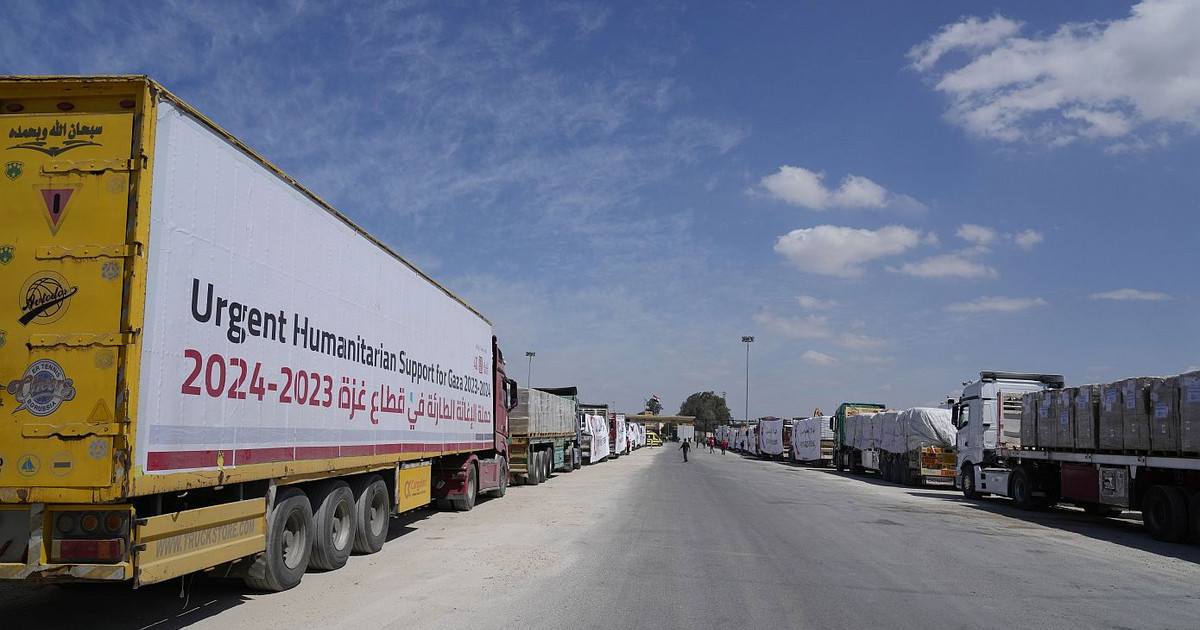the fight against climate changes has gained more and more strength and urgency, as they intensify and result in phenomena with negative effects on the economy and society as a whole. This scenario has generated a new phenomenon, the so-called inflation verde.
As the name suggests, this type of inflation is linked to measures that have been taken by governments to decarbonize the economy. One of the most important areas in this process is to energy, and so it has been one of the most impacted by green inflation.
However, as decarbonization intensifies, other sectors must be hit. Brazil itself should not be able to avoid this type of price increase, even though it has a much cleaner electrical matrix than the world average.
What is green inflation?
Otaviano Canuto, coordinator of the Center for Macroeconomics and Development, states that, before understanding what green inflation is, it is important to remember that no price increase linked to this phenomenon reaches the same level of the projected economic impact if nothing is done to fight against it. climate change.
That is, as much as this phenomenon negatively affects economies, it ended up being inevitable, even more so due to the delay of countries to start the decarbonization of their economies and the energy transition, requiring these processes to take place more quickly now.
Gesner Oliveira, a professor at FGV, defines green inflation as “a persistent pressure to increase prices derived from the change in relative prices associated with the energy transition, towards a decarbonization of the economy”.
According to Canuto, there are three main areas in the economy today that are likely to be impacted by green inflation.
The first is linked to the pricing or taxation of products and companies for the carbon emitted in their processes. As long as companies are unable to decarbonize, the tendency is that they will pass on, at some level, the extra costs of these fees to consumers, as much as they serve to encourage the process.
Second, there is the area of minerals. The trend, says Canuto, is for a high price shock for metals with intensive use for storage and production in the chain of renewable sources.
“Batteries, storage, generate enormous demand, and the renewable sources themselves demand the same raw materials, which are panel materials, turbines. This should mainly affect lithium, cobalt, nickel and copper”, he says.
As the supply of minerals takes time to rise, it will not react quickly to the increase in demand, and prices are expected to rise in the short term, as are those of renewable energy equipment. “It’s a new pricing supercycle. It makes wind and solar energy more expensive, as well as electric cars.”
Oliveira says that, in the case of fossil fuels, the tendency is for two movements. First, the drop in investments, including to find new exploration areas, should continue, with this, there is a drop in supply, which should lead to a rise in prices.
“The price of fossils tends to rise because they will invest and explore less, and the price of renewables also tends to rise, because demand grows a lot. As a result, the price of energy goes up, and this spreads throughout the economy,” he says.
And energy the third area affected by green inflation. Adriano Pires, founding partner of the Brazilian Center for Infrastructure (CBIE), says that this is where the phenomenon has most often occurred and has been shown to the public.
“The transition from firewood to coal, then coal to oil, were transitions determined by economic issues. The transition is now based on the environmental factor, and we should not have monopolistic sources like coal and oil, they will be diversified matrices”, he says.
However, as renewables today still cannot meet all the global demand, the tendency is for prices to rise, including electricity bills.
For Canuto, “even with technological advances in renewables, there is clearly still a cost differential in relation to fossil fuels, so the change implies, until the cost differential falls, in a cost differential. In literature it is called a green premium, an additional cost”.
Green inflation in 2021
The discussion around green inflation gained momentum in 2021, precisely because, for some scholars, part of the global inflation observed last year is linked to the energy transition process in countries.
“We saw that last year, with the pandemic, the demonization of fossil sources increased. In 2021, with the economy growing again, it was found that there was not enough renewable energy to sustain economic growth, and then energy prices soared”, says Pires.
Gesner Oliveira says, however, that in 2021 the reasons for the rise in prices were more conjunctural – such as lack of rains in Brazil and winds in Europe affecting renewables – than persistent pressure linked to that inflation.
But there is one country that seems to have been directly affected by green inflation, the China. “China has a much bigger challenge than Brazil, because the energy transition is more difficult. It is a country with a much dirtier matrix, dependent on fossil fuels, and the worst of it, coal, so the transition is more expensive”, he says.
The country put a number of restrictions on coal, but as activity resumed, other energy sources failed to meet demand. The result was a rise in the electricity bill, which affected other sectors and made producer inflation strong high, and the occurrence of blackouts and energy rationing in the country.
In this scenario, China was forced to temporarily lift some restrictions and resume the use of coal.
Pires assesses that the energy transition in the countries is being carried out “too fast. It takes decades, not years. Today we are seeing that energy is one of the things that most pressures inflation, oil has gone up, natural gas as well, and the trend for 2022 is the same, because it stopped investing, and then the supply does not increase”.
“You can’t make an energy transition with expensive energy, because it promotes inflation, reduces economic growth, and people lose quality of life, especially those with lower incomes,” he says.
Effects for Brazil
Otaviano Canuto states that, in the case of Brazil, a first type of consequence of green inflation is the taxation of products linked to deforestation by important markets, such as Europe.
The trend is also that if energy costs increase in other countries, this will be reflected in the price of products imported, generating some level of inflationary pressure. Even so, the degree of this impact depends on domestic factors, especially the exchange rate and those that help the dollar to go up or down.
One advantage of the country, however, is the large presence of renewable sources in the country’s electricity matrix, more than 80% compared to an average of less than 25% in the rest of the world. This means that Brazil does not need to go through an energy transition and its costs, but only manage and balance the sources in its matrix.
Oliveira says, however, that it is inevitable that green inflation will somehow reach consumers.
“Generally speaking, when the price of energy increases, you put pressure on the entire economy. All chains demand energy, if it becomes more expensive, you have pressure, people will feel it in the price of fuel, as we have already felt, but not in the intensity of 2021, because there were more conjunctural factors”, he says.
How to fight?
In Adriano Pires’ view, the perspective is that “energy will never be cheap, because demand grows more and more, and ahead of supply. The accelerated transition intensifies even more, fossils are demonized, supply is reduced, and prices soar. The world has to understand that energy is not going to be cheap, and it has to know how to consume, use and produce efficiently”.
He expects that a trend that should gain strength at the global level is to further diversify the electricity and energy matrix with clean and renewable sources, but in a process that should not be as fast as many expect, to reduce inflationary pressures.
Another trend is that the natural gas, a fossil fuel cleaner than coal and oil, is used in this transition, as is the energia nuclear, so that the energy supply does not fall in the process.
For Canuto, the fight against green inflation involves “accepting the change but without letting the average price, the set, enter the process of successive increases. We have to differentiate cost shocks, price shocks, inflation, which is more contaminated”.
“It is evident that, in the way we measure GDP, there will be a sacrifice in the size of energy-consuming areas, the evolution of GDP will be smaller”, he says. However, he states that the drop in GDP would be even greater with the effects of climate change.
“The bill for greening is more than offset by what is avoided with climate change getting worse”, he says.
For Gesner Oliveira, green inflation is still something to be avoided. He argues that the best way to avoid it is not with artificial interventions, but rather to encourage the regulation of a global market for carbon credits, as a way of encouraging the decarbonization of companies.
Another important measure, according to Pires, would be to make the population aware of more efficient ways of using energy, helping to reduce the current demand that is linked to the phenomenon of high prices.
“The great failure of governments in the world is that they do not encourage demand reduction policies. It’s not about worsening the quality of life, it’s about consuming more efficiently, intelligently. The focus on demand is still small, we should have programs, even educational ones”, he says.
According to Canuto, the fight against green inflation involves “accepting the change but without letting the average price, the set, enter the process of successive increases. We have to differentiate cost shocks, price shocks, inflation, which is more contaminated”.
“It is evident that, in the way we measure GDP, there will be sacrifices in the size of energy-consuming areas. The evolution of GDP will be smaller”, he says.
However, he claims that the drop in START would be even greater with the effects of climate change. “The bill for greening is more than offset by what is avoided with climate change getting worse”, he says.
Reference: CNN Brasil
I am Sophia william, author of World Stock Market. I have a degree in journalism from the University of Missouri and I have worked as a reporter for several news websites. I have a passion for writing and informing people about the latest news and events happening in the world. I strive to be accurate and unbiased in my reporting, and I hope to provide readers with valuable information that they can use to make informed decisions.






